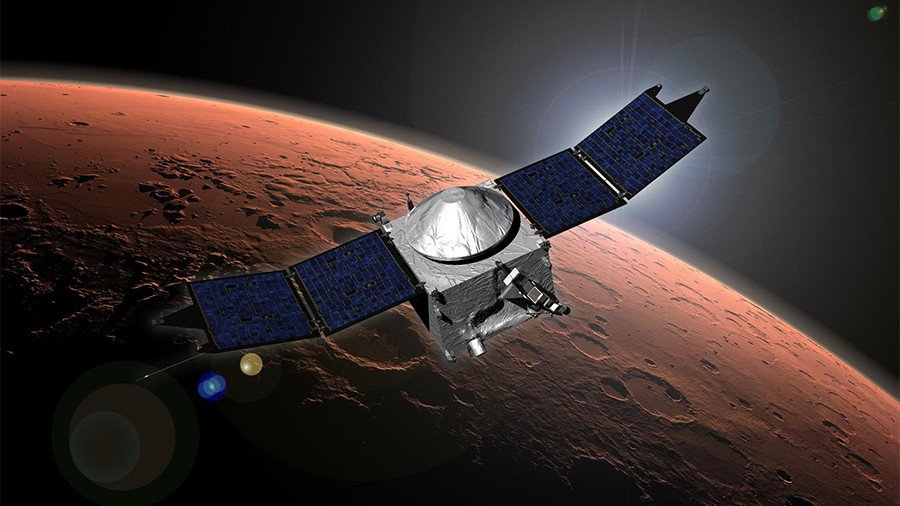‘Quite a ride’: NASA readies supersonic parachute for Mars mission (VIDEO)

If humankind hopes to colonize Mars, it first has to find a way to land a spacecraft safely on the red planet. For NASA, the key to cushioning the fall onto the alien world is a supersonic parachute.
The US space agency has released “first test”footage of a supersonic ‘chute’ that looks set to help a 2020 scheduled Mars rover, travelling at over 12,000 mph, touch down in one piece. The experiment is part and parcel of preparing for the extremely complex task of spacefaring. However, video of the device in action is anything but run-of-the-mill.
READ MORE: Mystery Alabama ‘boom’ rattles Twitter theorists, NASA unsure of origin
Packed into a 58-foot-tall Black Brant IX bullet-nosed rocket, the parachute was shot to an altitude 32 miles from NASA’s Wallops Flight Facility, Virginia.
The footage shows how at around 26 miles, and travelling at around 1.8 times the speed of sound, the nylon and kevlar parachute fires out of the NASA craft.
According to Ian Clark of NASA’s Jet Propulsion Laboratory, this breathtaking moment happens at a speed of around 100 mph.
In the summer of 2020, NASA plans to send a robotic lander to drill for soil samples on Red Planet. The space agency expect the mission to prepare the ground for future human exploration. Marvelling at the parachute’s success in a statement, Clark suggested the test was quite a thrill ride.
READ MORE: NASA building very own ‘Big F**king Rocket’ to rival SpaceX (VIDEO)
“We not only proved that we could get our payload to the correct altitude and velocity conditions to best mimic a parachute deployment in the Martian atmosphere, but as an added bonus, we got to see our parachute in action as well,” he said.
“The imagery of our first parachute inflation is almost as breathtaking to behold as it is scientifically significant. For the first time, we get to see what it would look like to be in a spacecraft hurtling towards the Red Planet, unfurling its parachute.”












